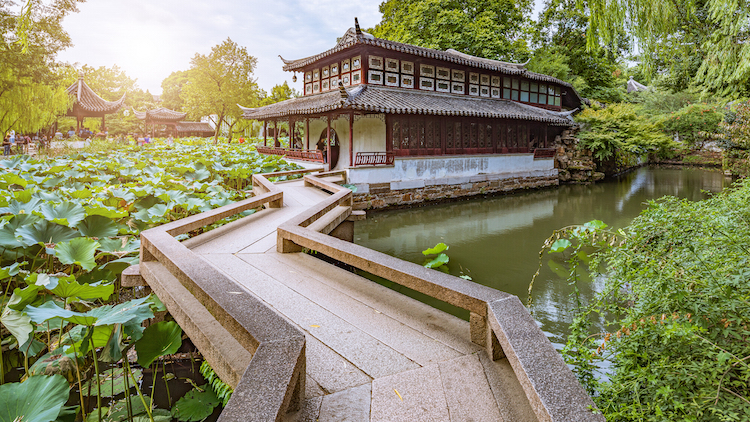Recycled coffee grounds can become a new low-carbon material for the fashion, construction and home decoration sectors thanks to their thermal insulation, bacteria resistance and deodorizing features.
A local design institute launched an exhibition yesterday to show the numerous possibilities of recycled coffee grounds, especially in furniture designs.
The Recycle Coffee Ground Panel Design Application Exhibition is open to the public for free at the over-century-old Maoma Warehouse along the Huangpu River in Yangpu District.
Professors and students from Tongji University College of Design and Innovation developed the eco-friendly panels made with coffee grounds into dining tables, chairs and loudspeaker boxes in cooperation with German specialty chemical firm Covestro.
More than 2 billion cups of coffee are sold every day globally, generating some 40,000 tons of grounds. Either buried or discharged into waterways, the coffee grounds can be a source of pollution, according to the college.
Aldehyde-free boards
However, their vesicular structure allows the coffee grounds to absorb pollutants and odors as well as resist bacteria. The recycled material is also good at transferring heat, keeping warm and absorbing water. It can be an ideal fertilizer for plants and made into cosmetics, the college said.
Covestro has developed the coffee grounds into aldehyde-free boards. The furniture made with the special material has an enduring coffee fragrance.
Under the guidance of Professor Mo Jiao, Yan Qun, a student of the college, designed a triangle-interlock shelf with traditional Chinese “sunmao,” or mortise and tenon structure. The shelf was a key exhibit of Covestro at the 4th China International Import Expo, held in Shanghai at the beginning of November.
Tree Table, another key exhibit, is made of recycled coffee grounds and composite boards. The natural pattern of the coffee ground boards is exposed without additional painting.
The Cafe Cloud Plate, from the Material Application and Design Laboratory of the college, can not only hold coffee mugs or dessert plates, but also release coffee aroma continuously.
The exhibition, on the warehouse’s second floor, is part of the Pan-Tongji Design Week ending tomorrow.






![How to Register Wechat Official Account Outside China [2022 Guide]](https://expats-hub-1306202437.cos.ap-shanghai.myqcloud.com/2022/05/WeChat-open-official-account-profile-300x200.jpeg)

